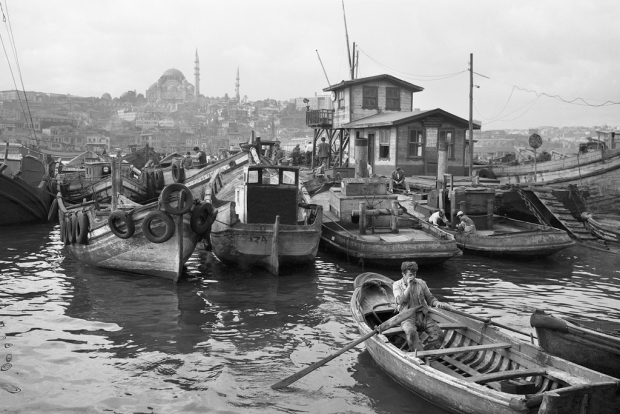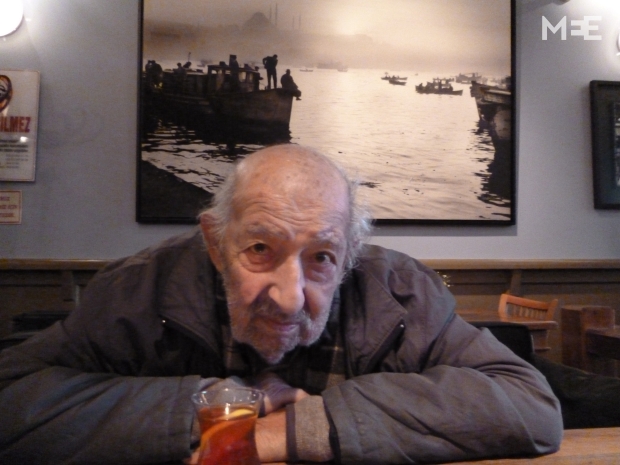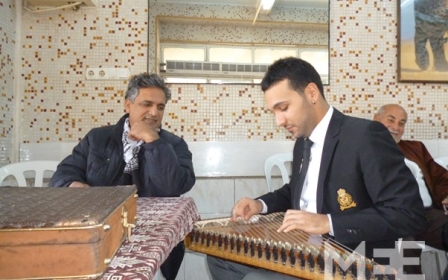The man who became the world’s window to Turkey

ISTANBUL, TURKEY - In an era when affordable mass travel was still unheard of, it was Ara Guler’s iconic photographs of Turkey, and Istanbul in particular, that fuelled the imaginations of thousands across the globe and introduced them to the rich human tapestry and cultural treasures that this land had to offer.
Over a career spanning decades, Guler has received the highest accolades available in his profession, and he is among a mere handful of people around the world to have been granted the prestigious “Master of Leica” award.
But perhaps the most apt title bestowed upon him was when someone coined the title “The Eye of Istanbul” to describe him. His Istanbul photographs are legendary. They capture the magical qualities of the city along with snapshots into the lives of its residents as they went about their daily activities in the 1950s, '60s and '70s.
“If it wasn’t for my photographs, we would have lost all memories of Istanbul from those days. The sad thing is very few people would have cared if the memories were lost. People are just after money and are not interested in this place,” Guler told Middle East Eye.
Apart from becoming the world’s window to Turkey, Guler also worked hard to bring the world to Turkey. Guler travelled far and wide to report on global events, and his work includes a breathtaking repertoire of portraits of global leaders and celebrities, ranging from Winston Churchill to Indira Gandhi, and from Sophia Loren to Salvador Dali.
Guler was unperturbed by the responsibility that came with this unofficial role of being such a crucial link between the world and Turkey and vice versa. He also didn’t consider one to be more difficult than the other.
“Both aspects are interconnected. The important thing is truth. Whether you are showing Turkey to the world, or the world to Turkey, it has to be based on truth. Anything else and your work is rubbish,” he said.
‘A man of the world’
Guler was born into an Armenian family in 1928 in Istanbul’s central Beyoglu district. He never focused on ethnic identity, either his own or that of others. He believes it would be impossible for a real resident of Istanbul to do so.
At 87, he might be physically frail, but he strongly holds onto his beliefs and is not afraid to speak his mind. He bristles with anger when the topic of ethnicity is brought up.
“My ethnicity didn’t affect me at all. I am not Turkish. I am not Armenian. And I am not Japanese. I am a man of the world. I am from Beyoglu, Istanbul, and I am a man of the world,” he said.
“Beyoglu used to be one of the most cosmopolitan places on the planet. It is impossible for anyone that grew up here to box themselves into the narrow confines of a particular identity.”
Yet, leaving it unmentioned would fail to do justice to the scale of what Guler has managed to achieve. Turkey has a rather dismal record when it comes to the treatment of its minorities. But through his sheer artistic brilliance, Guler managed to make all that a non-factor. He not only conquered the heights of his profession but also set new standards; and in the process earned the immense respect and admiration of all sections of Turkish society and the world at large.
Guler’s story is not a rags-to-riches tale. His father was a wealthy pharmacy owner in Beyoglu. He used to supply almost all theatre artists in the area with their make-up requirements, and was also a purveyor to cinemas in the area of the chemicals needed for their film.
When a young Ara expressed an interest in cinema and theatre, his father arranged for him to intern at a cinema and attend theatre school in the summers.
“It was there that I decided I wanted to become a photojournalist. The principles of cinema and photography are the same. But being a photojournalist would allow me to be my own man and give me the freedom to travel the world,” Guler said.
His most recent book is An eye, a Camera and Reality. It was published last month and details his early years, his personal life and career. It contains a treasure trove of photographs that have not been previously published.
A documentary titled The Eye of Istanbul: The Life and Photographs of Ara Guler is also set for release in 2016. It includes extensive interviews with Guler and contemporaries of his from across the world discussing his masterworks and his legacy of portraying Istanbul and Turkey.
Fate of archives and legacy
Guler has amassed a priceless archive over the course of his life and career that now consists of more than two million photographs. This vast archive contains iconic pictures that range from images of an Istanbul that has now changed beyond all recognition to global celebrities of a bygone era, to ancient and forgotten sites such as the settlement of Aphrodisias, which were rediscovered and professionally photographed for the first time by Guler.
Many believe a museum or institute dedicated to Ara Guler would be an appropriate way to preserve this national cultural treasure and allow access to it for future generations. Guler, who can even count Turkish President Recep Tayyip Erdogan among his circle of friends, certainly is able, at the very least, to bring up the issue if he chooses to. But he is stoical about it all.
“If the state does that for me, it has to do it for everyone else too. It wouldn’t be fair otherwise. And we also just have to accept that some societies appreciate culture and arts and do such things, whereas others don’t.”
He added: “Anyway, why would I want to put my archive in the state’s hands. What do they understand of such things? They would just ruin it.”
When it comes to the most memorable moments of such a long career, Guler said that rather than the photographs themselves, it is the memories of experiences during their taking that linger.
“For example, I went off to cover a war on a remote Pacific island. I boarded this rickety boat in Indonesia, and it took me three weeks to get to my destination on that boat. Every single second of that boat ride felt like a life and death moment.
“Or there was this time I was stuck for days on a remote mountain while working. There was no food. Food was the meat of lizards I caught and roasted on a fire. Guess what? I am not very fond of lizard meat!”
Personal experiences aside, his photographs are very evocative. Just as his images of Istanbul fill both the young and old with a sense of nostalgia, Guler nostalgically reflects on how his beloved Istanbul looked in the past, and how it has changed.
“Istanbul is different now. Its inhabitants have changed and because of that the city’s architecture and structure have also changed. Istanbul always changes, and I am glad that I was lucky enough to capture one great era of this city.”
Even at the age of 87, Guler refuses to entertain the thought of retirement. He continues to be actively involved in gallery exhibitions of his works and collections.
“I will be done when I am done. Obviously I can’t run around like when I was younger, but if something interesting was to appear at the right moment, of course I would shoot it.”
Stay informed with MEE's newsletters
Sign up to get the latest alerts, insights and analysis, starting with Turkey Unpacked
Middle East Eye delivers independent and unrivalled coverage and analysis of the Middle East, North Africa and beyond. To learn more about republishing this content and the associated fees, please fill out this form. More about MEE can be found here.







